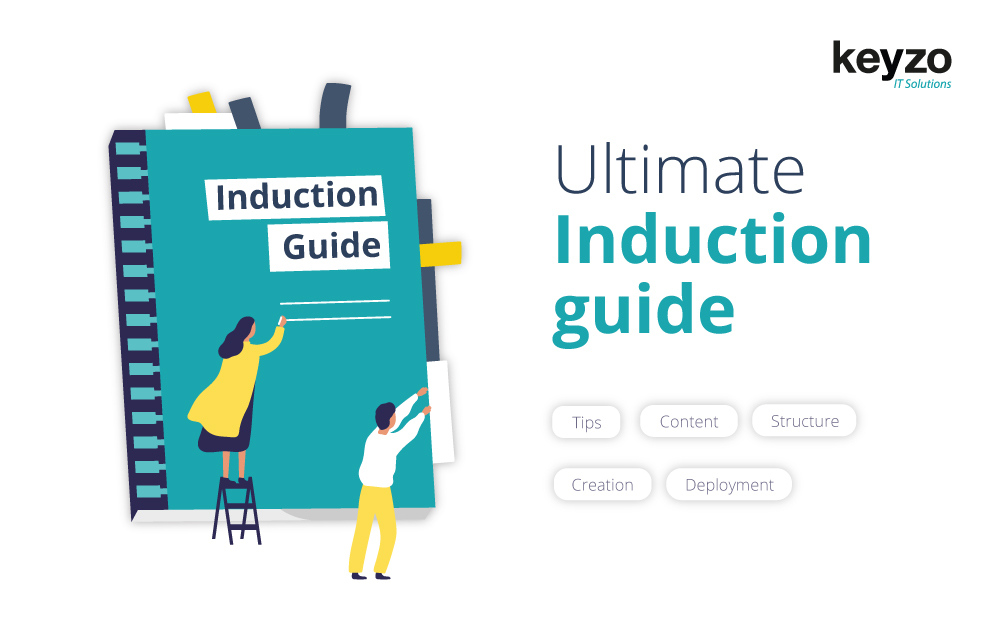
Induction Training Ultimate Guide: How to Create Inductions
Effective induction training is crucial for new employee success and retention. However, common problems such as poor planning, lack of feedback and insufficient training can reduce their effectiveness.
In this article we will be outlining everything you need to build a program that works.
Key Takeaways:
- Determine your objectives and users.
- Cover three core areas: Orientation, job and health and safety.
- Consider learning styles and content types.
- Decide a delivery method: in-person or digital.
- Organise information in a clear and concise manner.
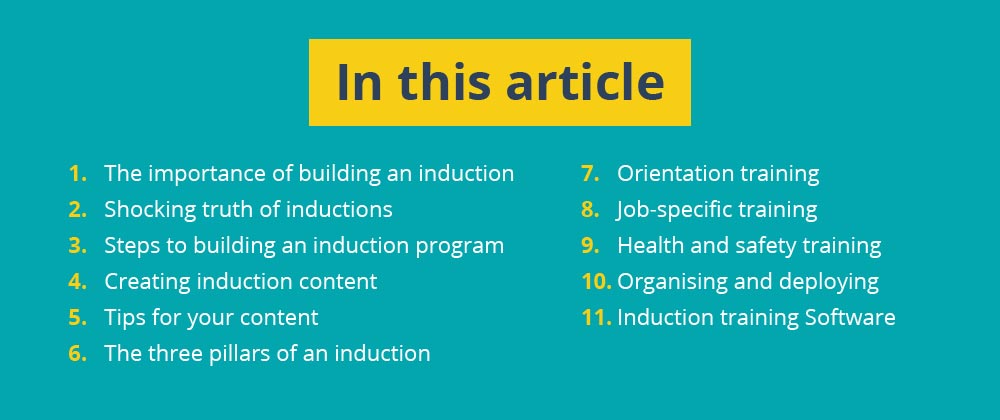
Induction Training Definition
Induction training, also referred to as onboarding, is the process of introducing people to your organisation and their role.
There are lots of benefits to induction training, they set the tone for overall experience, help people feel supported, welcomed and ensure they are equipped with the necessary skills, knowledge and confidence to perform their job effectively and safely.
The shocking truth about inductions
- 20% of staff turnover occurs in the first 45 days of employment (source)
- 12% of employees say their organisation has a good induction (source)
- New employees with good inductions are 18x more committed (source)
- Great inductions can improve employee retention by 82% (source)

Create employee induction training
Before you go ahead and start building your induction program, ask the following questions and determine what is important to your business:
- Objectives
What are the goals of the program? What are the desired outcomes? What do you want a new employee to gain? - Key topics
Job-specific induction training, Health and Safety training, Site-Specific material, Company overview. - Key users
Who will be on the receiving end and what do you need from them, is it new starters, agency workers, contractors? - Implementation
When will the induction go out? How long will it be? Will you have some pre-boarding? - Content
Presentations, videos, quizzes or competency questions etc. - Delivery
Some businesses may prefer to deliver induction training in person and have introduction sessions on their first days, others may opt for a digital solution to improve their induction process and deliver content remotely. - Timeline
What should be completed and when by? For example, if you go down the digital route you could configure notifications and reminders to guide users through completion via deadlines. - Assessment
Gather feedback from employees and make necessary adjustments to the program. Competency questions are a good way of ensuring information is understood and pinpointing weak spots.
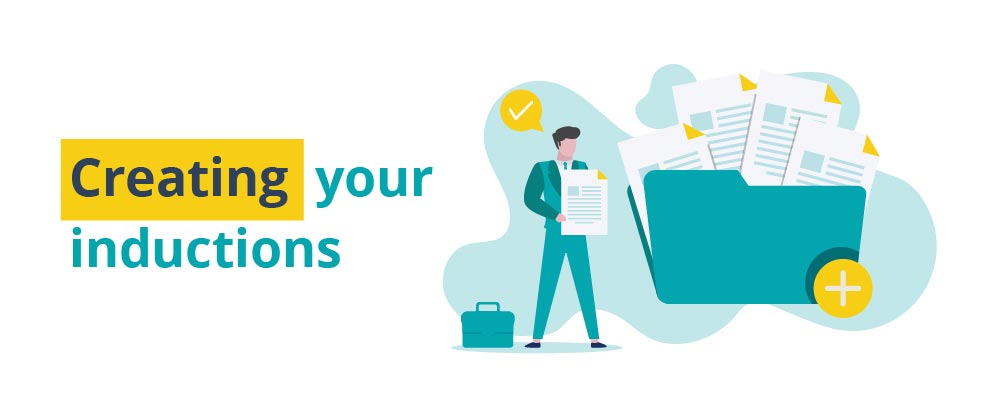
Creating an Induction
Once you’re clear on what your induction should look like, you can begin creating. Here’s a list of considerations when making your induction:
- Tailoring
Personal inductions are much more engaging than a ‘one size fits all’ approach, making them key to retention, satisfaction and reducing employee turnover. - Learning Styles
Making your induction training engaging and interactive can be difficult, but the best starting point is to consider different learning styles, for example videos and quizzes. - Pre-boarding
Pre-boarding maintains communication between job acceptance and start date, offering confidence in the company and the feeling of support. - Self-paced learning
Traditional induction training is completed in the first 1-2 days and can overwhelm new starters, having a knock-on effect on retention.
Aim to accommodate self-paced learning, for example using software for pre-arrival inductions which can be completed at home. - Incorporating technology
Technology can improve the navigation of learning and aid understanding, making inductions more memorable, inspiring and modern. - Brand
Welcome new hires with branded inductions to leave a positive first impression and help them connect with the company, culture and identity.
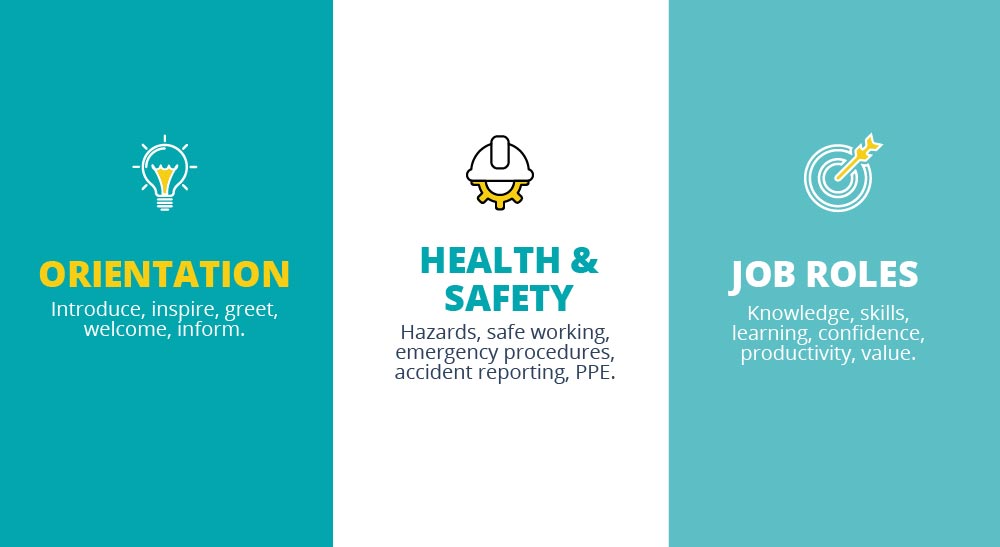
The Three Pillars of an Induction
Successful induction training should cover three key elements to ensure a solid foundation, Orientation, Job Roles and Health and Safety.

1. Orientation Training
Orientation training is what your employee needs to know about your company, such as the structure, culture and values.
In this section you should also include an introduction to colleagues and team members, as well as an explanation of any company policies and procedures.
- Overview: Your history, products or services and competitive landscape.
- Communication: Channels and any technology or systems you use.
- Progression: Career development expectations and opportunities.
- Benefits: Bonuses, holidays, healthcare etc.
- Development: Any training and development opportunities available.
- Culture and values: How they align with the employee’s role.
- Structure: Key departments, team members and points of contact.
- Policies and procedures: Key documents required to read (Policies list)
Why is it important?
First Impressions count: It would be weird if you introduced yourself to someone and they didn’t introduce themselves back, wouldn’t it? This is where you introduce yourself (the company).
Integrating to the team: It makes them feel comfortable and integrated, part of a wider support network and not alone, reducing the risk of turnover.
Compliance: Explaining company policies and procedures ensures the ‘do’s’ and ‘don’t’s’ are communicated, setting both employee and employer up for success.

2. Job Specific Training
Job-specific induction training should focus on the employee, covering the skills and knowledge needed to perform their job effectively.
This section should include information about the job’s responsibilities, tasks and expected outcomes.
- Duties and expectations: Outline the role, duties and expectations.
- Procedure: Teach standard procedures and required skills.
- Performance: Outline clear goals and metrics used.
- Sites: If you have multiple sites, create site specific guidance.
- Protocol: Problem resolution, common issues etc.
- Equipment: Tools or technology required for the job.
- Shadowing: Learn from other employees.
Why is it important?
Responsibilities and expectations: Job-specific induction training ensures new employees understand their role, duties and performance expectations, reducing the risk of confusion and errors.
Productivity: By providing new employees with the information and skills they need to execute their tasks, they can become productive faster and contribute to the company’s success.
Safety: Job-specific training should include job-specific safety information, ensuring they know the potential hazards associated with their role, use equipment safely and how to respond to emergencies.

3. Health and Safety Induction
Health and Safety induction training is a core module for any compliant company, employees should be aware of any potential hazards and how to work safely.
Health and safety training should cover topics such as emergency procedures, accident reporting and the use of personal protective equipment (PPE).
- Policies and procedures: i.e emergency procedure or first aid.
- Hazards: Common hazards and job-specific hazards.
- Compliance: Appropriate rules, for example PPE.
- Handling and storage: Handling techniques, hazardous material etc.
- Operation: Safe operation of equipment and machinery.
- Communication: How to communicate hazards and issues.
- Documentation: Where to find incident and near-miss forms for example.
- Hygiene: Sanitation and hygiene standards and practices.
Why is it important?
Risk reduction: Health and Safety training informs and educates people how to identify and prevent hazards, lowering the risk of accidents and injury.
Compliance: Health and Safety training gives the employer the opportunity to cover regulations and compliance requirements, ensuring employees are aware of them and comply.
Culture: Pro-actively promoting a safety culture expresses the importance of following procedure and increases the likelihood of them being taken more seriously.
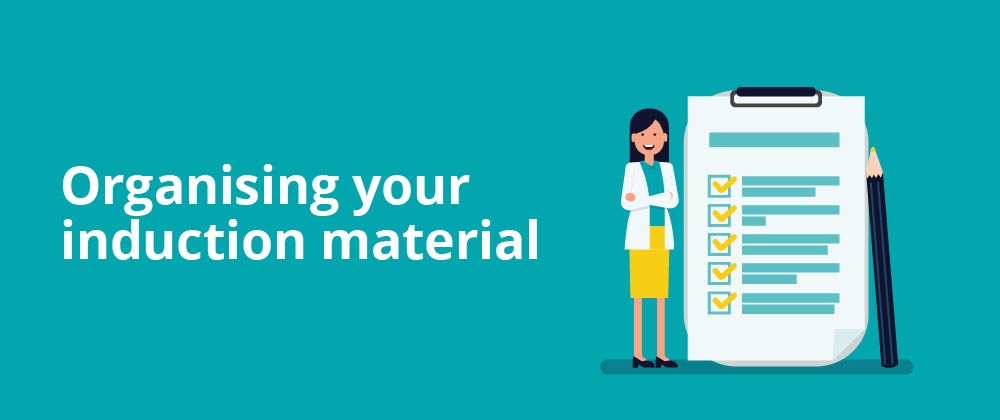
Organising your Induction Training
Organising your induction material is important to ensure employees can easily follow and understand the material, deadlines and digest important information.
- Divide into clear sections
Create bite-sized sections based on the above topics, this will make induction training less daunting, easier to digest and better to navigate. - Formatting
Use a clear and consistent format to present the material, include bullet points, lists, tables and charts to break things up. - Visual aids
Visuals help simplify complex information and quickly summarise key takeaways, consider using infographics, videos, images, presentations, charts and graphs. - Module builders
Software such as Induct & Train can help you organise and structure your content more efficiently, for example you can create individual module elements which can then be assigned to any induction you’re building, giving you quick control over who receives what. - Test and improve
Before rolling it out to the masses, test your newly built induction on a small batch of people and identify any improvements.
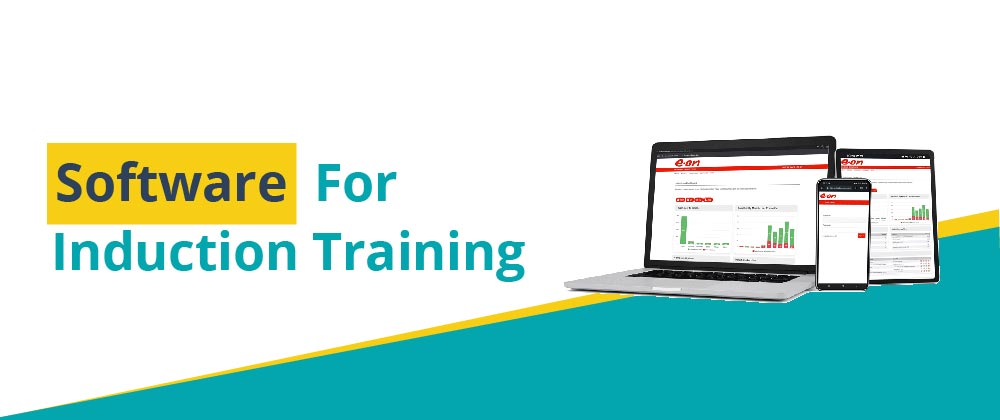
Induction Training Software
Induction training software can make inductions more manageable for both employers and employees.
Induction software allows employers to control their inductions with a centralised platform to manage modules, issue inductions and track progress.
Document management, remote off-site inductions, job role creation and site specification can enable employers to centrally manage all sites, employees and material.
- Consistency
Ensure that the correct induction material is issued and avoid any differences between sites, for example. - Time and Cost-efficient
Automating the process only requires significant involvement during setup, after which the need for in-person inductions is limited and cost reduced. - Tracking and Reporting
View completion rates, spot any commonly failed modules, identify areas of additional training, notify line managers of important information. - Accessible
Software allows pace and convenience, reducing stress and increasing likelihood of retention. - Retention
Software platforms are more engaging and have options for delivering content. - Compliance
Records can be pulled in a moment’s notice, allowing you to cross-reference any disputes in training. - Customisation
Software can be customised to the requirements of the company, taking the headache away from developing the bones of your induction program. - Scalability
Easily scaled to accommodate new employees

Unlocking Potential with Inductions
Induction training isn’t just important, its essential. But here’s the thing: its not just about ticking boxes, it’s about investing in your people and giving them to the tools to succeed.
The best part: the benefits of an effective induction program are massive! Employee engagement, increased productivity, and improved retention.
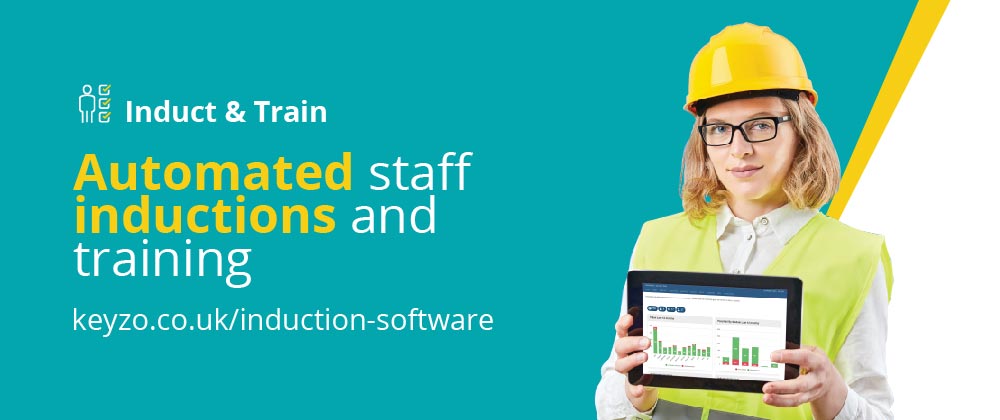
Simplify your process: Online Induction Training Software
Streamline your induction process with Induct & Train – the hassle-free solution that simplifies inductions. Contact us now to reduce administrative burden, increase productivity and create a better experience for new hires.
